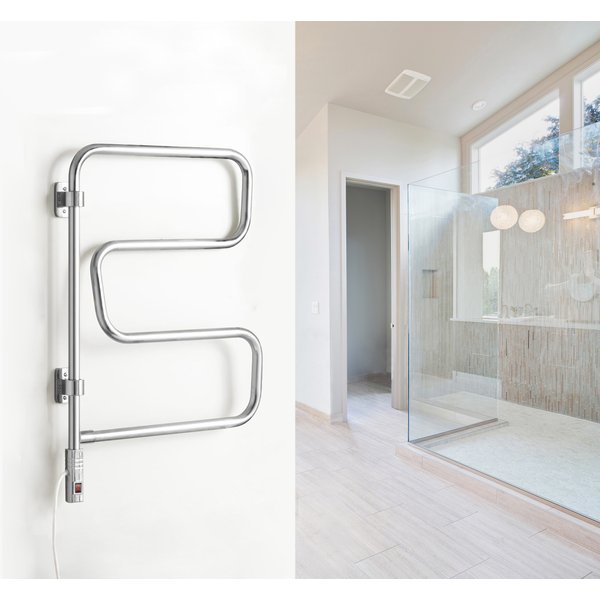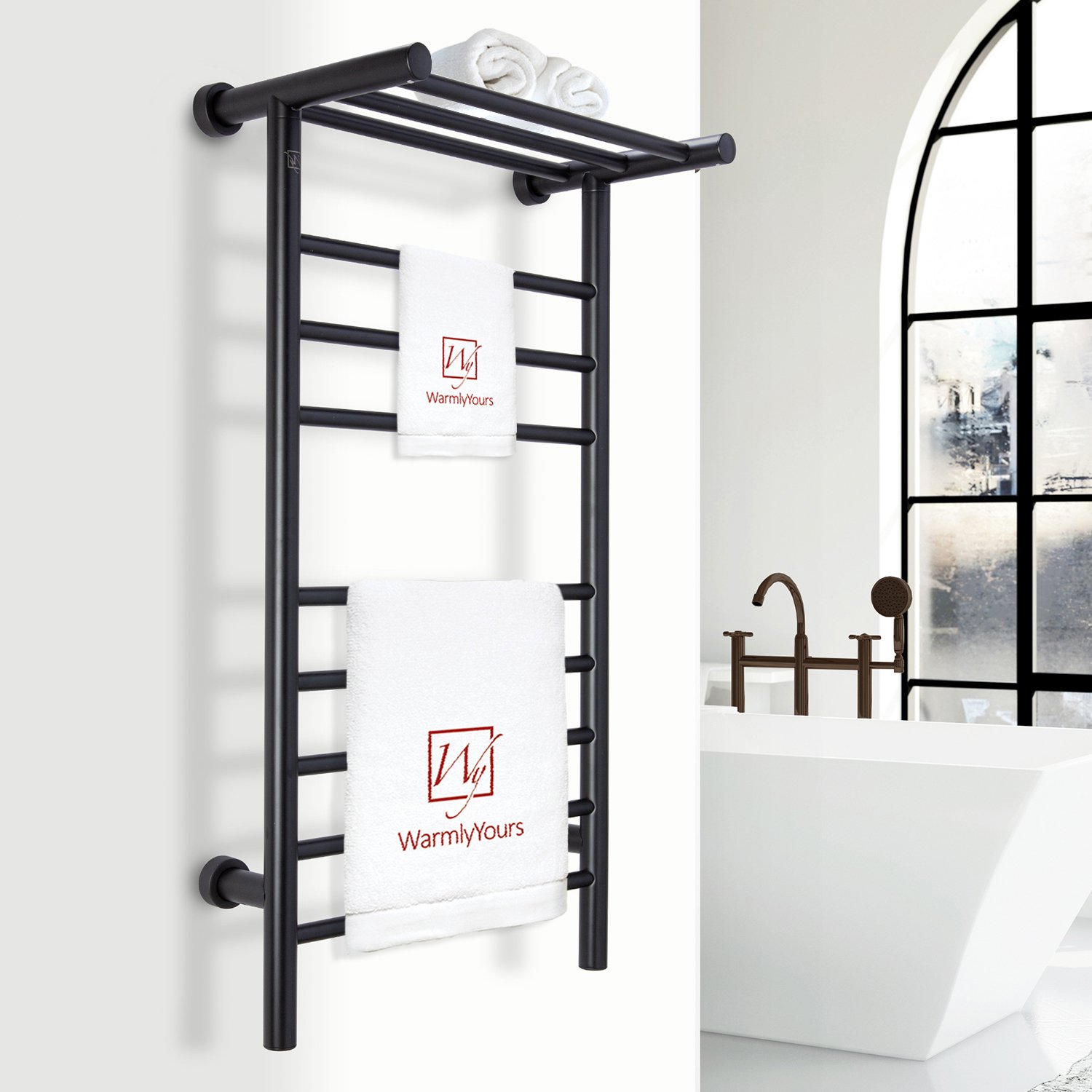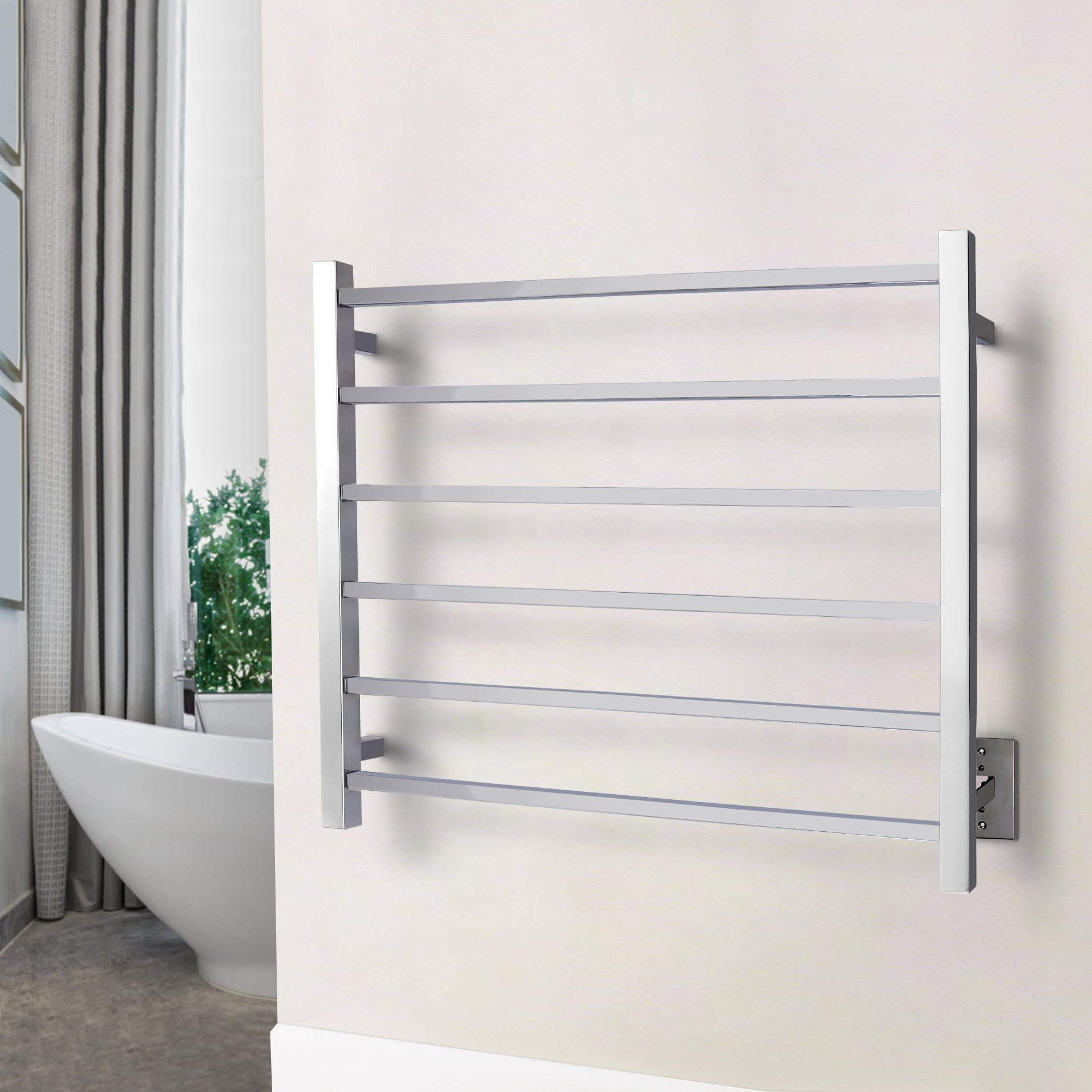Did you know there’s more than one way to use a towel warmer? Sure, most of the time it’s used to warm towels in a bathroom. That’s why the towel warmer was created. However, did you know it can also be used to warm other items like swimsuits and wet clothing? And that some people use it in other areas of the house besides the bathroom? Plus, did you realize that while a towel warmer is on, it’s also adding supplemental heat to the room?
How to Use a Towel Warmer
Towel warmers — also known as heated towel racks — are amazing appliances. How you use one depends on you and your home.

For instance, every home has a shower or tub, which means there's generally an opportunity to install a towel warmer in every home. If you can locate an empty wall, then your bathroom is a candidate.
Towel warmers allow any homeowner to experience the luxury of toasty warm towels or hand towels every time they step out of the shower or tub, adding comfort and value to your daily routine. The stainless steel that most towel warmers are made of is also very low maintenance. Plus, they offer the added benefit of acting as space heaters by providing some supplemental heat, which is ideal when you're dealing with tile that's inherently cold to the touch.
While they are attractive additions, towel warmers aren't only for bathroom decoration. They're also great for sunroom additions or even in laundry rooms (next to the washer and dryer), mud rooms, or indoor pool areas, demonstrating their versatility and convenience in various areas of your home. It's important to note that heated towel racks are most compatible with natural material towel sets so they shouldn't be paired with microfiber towels or synthetic quick dry towels.
Installing a towel warmer in a laundry room is great for homeowners who regularly wear "delicate" clothing. Instead of putting the items in the dryer on a "delicate" setting, you can let them gently dry on a heated towel rack, extending the life of your delicate garments and adding convenience to your laundry routine.
Towel warmers are an affordable luxury that provide comfort and value in bathrooms and other rooms.If your home has a mud room, imagine the convenience of setting wet coats and gloves on a heated towel rack to dry on a rainy or snowy day, demonstrating the towel warmer's worth in keeping your home clean and organized.
Or, if your home has a pool, think of how convenient it would be to set wet towels or bathing suits on a towel warmer to dry after coming in from a swim. The days of schlepping wet garments through the house to the laundry room are gone! Homeowners with pools also can choose to warm their towels before they go for a swim so they'll have a warm towel waiting for them when they step out of that cold pool water, adding a touch of luxury and comfort to their swimming experience.
Depending on where your towel warmer is located, you can decide whether you want to program it to turn on every day at a specific time or if you'd prefer to turn it on manually when you need it. A programmable thermostat and/or a WiFi switch is available for pairing with any WarmlyYours towel warmer.

The Benefits of Owning a Towel Warmer
Towel warmers offer a range of benefits that make them a worthwhile investment for many homeowners. Some of the key advantages include:
- Increased comfort: There's nothing quite like the feeling of wrapping yourself in a warm, cozy towel after a shower or bath. Towel warmers provide this luxurious experience every time you step out of the water.
- Convenience: Towel warmers are not just for warming towels. They can also be used to dry delicate clothing, warm up swimsuits, or even dry wet coats and gloves, making them a versatile and convenient addition to your home.
- Energy efficiency: Most towel warmers have low energy consumption, costing only pennies a day to operate. This makes them an energy-efficient choice for adding comfort and luxury to your home.
- Supplemental heat: When a towel warmer is on, it also provides supplemental heat to the room, helping to keep your bathroom or other space warm and cozy.
- Drying efficiency: Towel warmers can help reduce drying time for towels and other damp items, discouraging the growth of mold and mildew.
Are Towel Warmers Worth It?
If the benefits of a towel warmer are piquing your interest, you may be wondering about the towel warmer cost and if they are truly worth the investment. At WarmlyYours Radiant Heating, a towel warmer costs between $149 and $499, depending on the style you choose.
To operate the unit, it typically costs only pennies a day because the towel warmers have very low energy consumption, making them a cost-effective and energy-efficient addition to your home. Based on the national average electricity rate, the cost of operation is about 15 cents per day, but the cost will vary depending on the price of electricity in your area.
The low daily operating cost, combined with the numerous benefits and added value towel warmers provide, make them a worthwhile investment for many homeowners looking to add comfort, luxury, and convenience to their daily routines.
Hydronic Towel Warmers or Electric Towel Warmers?
If the price of a towel warmer is more affordable than you thought, it’s time to narrow down your options. There are two types of heated towel racks on the market: hydronic and electric.
Hydronic towel warmers use water to heat the rack. As a result, they must be connected to hot-water plumbing. This option can be a bit more complex to install. That’s why it’s generally best to install a hydronic towel warmer during a remodel. If you already have a hydronic radiator, the easiest way to install a floor-mounted hydronic towel warmer is to put it in place of your radiator, according to DIY.com. This will prevent you from having to drain your system or tear up your flooring.
WarmlyYours offers electric towel warmers, which use an electric heating cable to warm up the rack. They can be plugged into a standard outlet or hardwired to the home’s circuit. Hardwiring a towel warmer requires some electrical work; however, plug-in towel warmers only require a three-prong outlet. As a result, they’re as easy to hang as a picture frame. A freestanding option also is available, which simply rests on the ground with no installation required. Just plug it in, switch it on, and you’re ready to go.
To see how to install a hardwired towel warmer, check out the video below.
Plug-in Towel Warmers vs. Hardwired Towel Warmers
There are two main things to consider when choosing between a plug-in towel warmer and a hardwired towel warmer: appearance and installation.
If you want a clean, sleek look without any wiring showing, a hardwired towel warmer is for you. The wiring for these models is tucked away entirely within the wall. Plug-in models, on the other hand, will show the wire leading from the unit to the nearest outlet.

However, plug-in towel warmers are the easiest to install because they don’t require any electrical work. They can be mounted on the wall like a piece of art, and they only require an existing three-prong outlet to work. In contrast, hardwired towel warmers must be connected to a junction box, which requires some additional work. Additionally, if you're interested in freestanding towel warmers, these will will be plug-in.
WarmlyYours offers a line of "dual connection" towel warmers which come as plug-in models but they can be modified by a licensed electrician to have a hardwired connection, while maintaining it's safety listings and approvals. This is a great option for anyone who is on the fence about the type of electrical connection they would prefer for their new towel warmer.
Another consideration when identifying if you are evaluating the electrical connection type of your towel warmer is where the power in the room is located. A hardwired towel warmer will need to be located closer to the gangbox behind the wall then say a plug-in would need to be. Freestanding towel warmers can be really good options if your power source is distant so that you can move the towel warmer within arm's reach before you get in the shower and then move it back when you're done.
Towel Warmer Maintenance and Care
To ensure your towel warmer remains in top condition and continues to provide value for years to come, it's important to follow some basic maintenance and care guidelines:
- Regular cleaning: Wipe down your towel warmer regularly with a soft, damp cloth to remove any dust or debris. For more stubborn stains, use a mild soap solution and dry thoroughly.
- Avoid harsh chemicals: Do not use abrasive cleaners or chemicals on your towel warmer, as these can damage the finish.
- Check connections: Periodically check the electrical connections and wiring to ensure they remain secure and in good condition.
- Proper usage: Follow the manufacturer's guidelines for proper usage, including the maximum weight capacity, number of towels the device can accommodate at one time, and the recommended materials of towels or bathrobes.
With proper maintenance and care, your towel warmer can provide long-lasting comfort and convenience, making it a worthwhile investment for your home.
Choosing the Right Towel Warmer for Your Home
With so many towel warmer options available, it can be challenging to know which one is right for your home. Here are some key factors to consider when making your decision:
- Size: Consider the size of your bathroom and the available wall space. Choose a towel warmer that fits comfortably in the area without overwhelming the room.
- Style: Towel warmers come in a variety of styles, from classic to modern. Select a design that complements your bathroom's existing décor and reflects your personal taste.
- Finish: Towel warmers are available in a range of finishes, including polished, brushed, black, gold, and oil-rubbed bronze. Choose a finish that coordinates with your bathroom fixtures and hardware.
- Heating method: Decide between electric (plug-in or hardwired) and hydronic towel warmers based on your installation preferences and the availability of hot water plumbing connections.
- Energy efficiency: Look for towel warmers with low energy consumption to minimize operating costs and reduce your environmental impact.
- Price: Determine your budget and look for a towel warmer that offers the best combination of features, quality, and value within your price range.
By considering these factors, you can find the perfect towel warmer to enhance your bathroom experience and provide long-lasting comfort and convenience.

WarmlyYours offers a range of four hardwired towel warmers and three plug-in models in various styles and sizes. One of the plug-in models is freestanding, but the rest are all wall mounted options.
Click here to learn more about WarmlyYours towel warmers.
Frequently Asked Questions (FAQs)
Here are some of the most common questions we get about towel warmers.
Can I use a towel warmer to dry wet towels?
Yes, towel warmers can be used to dry wet towels.
How long does it take for a towel warmer to heat up?
The time it takes for a towel warmer to heat up varies depending on the model's heat output and surface area along with the material of the towel itself. On average, most towel warmers take between 15 to 30 minutes to reach their maximum temperature. The towels themselves will take a bit longer than that to get up to temperature.
Can I leave my towel warmer on all the time?
Yes, and while it is safe to leave your towel warmer on for extended periods, it is more energy-efficient to use a timer or programmable control to energize the device based on your daily routine and usage needs.
Are towel warmers safe to use in a bathroom?
Yes, towel warmers are specifically designed for use in bathrooms and are safe when installed and used according to the manufacturer's guidelines.
How do I clean my towel warmer?
To clean your towel warmer, simply wipe it down with a soft, damp cloth. For stubborn stains, use a mild soap solution and dry thoroughly. Avoid using abrasive cleaners or harsh chemicals, as these can damage the finish of your towel warmer.




